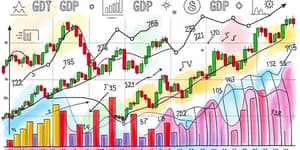
Swing trading offers a compelling approach for active market participants seeking to capture meaningful moves without constant screen monitoring. This article delves into proven methods, tools, and mindsets that empower traders to navigate ever-changing conditions.
Swing trading is designed to capture short-to-medium-term gains by holding positions from several days to a few weeks. Unlike day trading, positions endure overnight and across sessions, allowing traders to exploit both rising and falling price swings. This approach sits between intraday strategies and long-term investing, offering a balanced tempo for those who value flexibility and opportunity.
Successful swing traders rely on well-defined methods that align with their risk tolerance and market outlook. The following strategies form the backbone of many profitable setups:
To choose the right approach, consider how swing trading contrasts with rapid intraday tactics:
Technical analysis drives swing trading decisions by revealing trends, momentum, and volatility. The most widely used indicators include:
Protecting capital is as vital as identifying opportunities. Effective risk protocols include:
Emotional control separates consistent winners from impulsive losers. To cultivate discipline, traders should:
Maintain a detailed trading journal noting setups, entry/exit reasons, and outcomes. Reviewing past trades builds self-awareness and highlights areas for improvement.
Practice patience and objectivity by sticking to predefined criteria and avoiding emotional impulse trades when markets twist unexpectedly. A calm mind helps navigate drawdowns and resist the urge to overtrade.
Seasoned traders often blend technical methods with fundamental insights to refine their edge. For example, noticing an upcoming earnings report or central bank decision can provide context for technical signals in stocks or forex. This integration can enhance timing when volatility events trigger pronounced swings.
Consider a real-life scenario: A stock in a clear uptrend pulls back to its 50-day EMA, aligning with a 38.2% Fibonacci retracement. When RSI hovers near 40 and a bullish candlestick forms, a trader enters long with a stop below the swing low. As the trend resumes, they trail the stop behind a shorter SMA, locking in gains as price extends higher.
To thrive in dynamic markets, embrace continuous learning and leverage technology. Backtest strategies on historical data, adapt indicator settings to evolving volatility regimes, and stay informed about macroeconomic trends. Employ real-time charting tools and automated alerts to capture setups promptly.
Lastly, foster a growth mindset: view each trade as a lesson, not just a profit opportunity. Over time, consistent application of disciplined strategies and robust risk controls can transform swing trading into a sustainable path toward financial goals.
References













